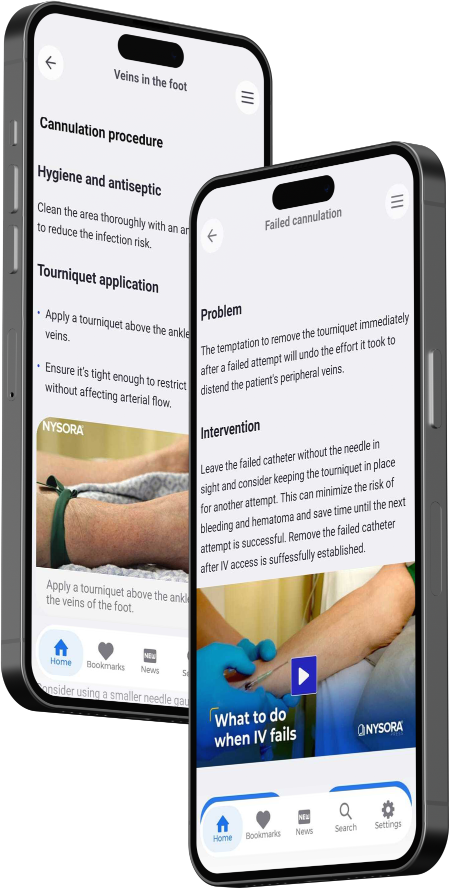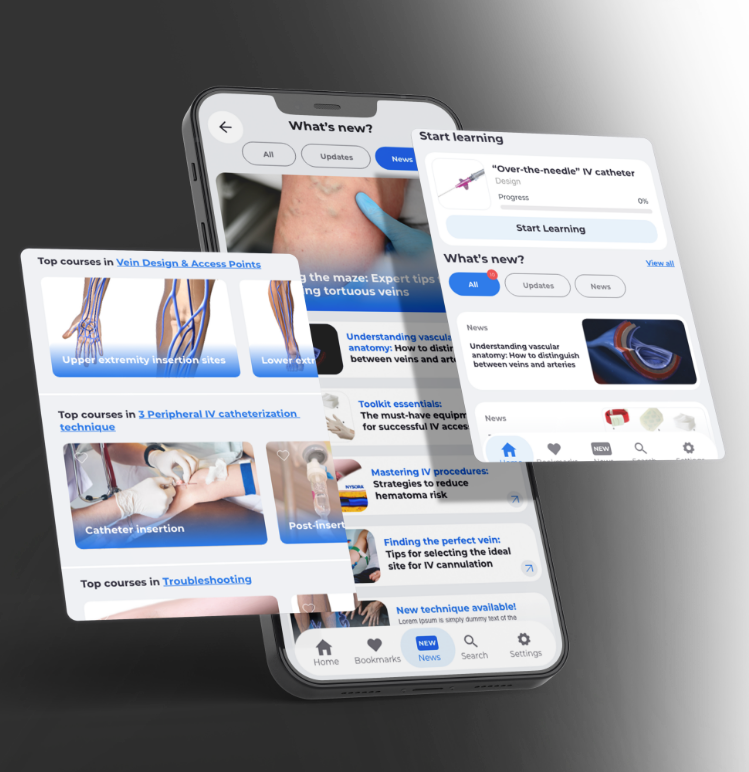Explore NYSORA knowledge base for free:


Visual and textual guides for mastering IV access.

Easy navigation through the technique of peripheral IV access and troubleshooting.

Real-life clinical examples and expert demonstrations.

Detailed visual aids provide clarity and guidance for achieving expertise in IV access techniques.


Download the NYSORA IV Access App today and perfect your IV catheterization technique!



The NYSORA IV Access App is a cutting-edge, mobile-friendly resource designed to help healthcare professionals perform and refine their intravenous (IV) access techniques. It provides step-by-step instructions, high-quality illustrations, and clinical tips to improve success rates and patient safety.
This app is ideal for anesthesiologists, emergency physicians, critical care specialists, residents, nurses, and other healthcare professionals who perform IV access.
The app includes:
The NYSORA IV Access App provides quick, on-the-go access to expertly-curated techniques, helping you:
Absolutely. The app is designed as a real-time reference tool, providing concise and actionable guidance that can be used directly during procedures.
Yes. The app regularly updates users with the latest clinical tips to ensure you remain informed of best practices.
NYSORA frequently revises the app’s content to reflect the latest research and clinical guidelines. Subscribed users receive these updates automatically, ensuring access to the latest updates and techniques.
Download the NYSORA IV Access App from your preferred app store, create an account, and explore the free content. For extended features, subscribe to unlock the full library and clinical videos.
Yes. The app includes detailed instructional videos demonstrating real-life clinical examples and expert demonstrations.
Yes. The app features high-quality, detailed anatomical illustrations that improve your understanding of IV access techniques.
The app is designed to be highly practical. It provides step-by-step guidance for application in clinical settings.
Yes. The app includes interactive features such as videos and troubleshooting decision trees.
The app can be used in multiple ways:
1.Pre-procedure review – Quickly refresh your knowledge before performing IV access.
2.Live guidance – Follow step-by-step instructions during a procedure.
3.Skill improvement – Refine your techniques with expert tips and troubleshooting strategies.
It’s a mobile-friendly reference tool offering:
The NYSORA IV Access App is developed by NYSORA’s team of experts. The content is rigorously reviewed and updated to provide evidence-based, clinically relevant information trusted by healthcare professionals worldwide.